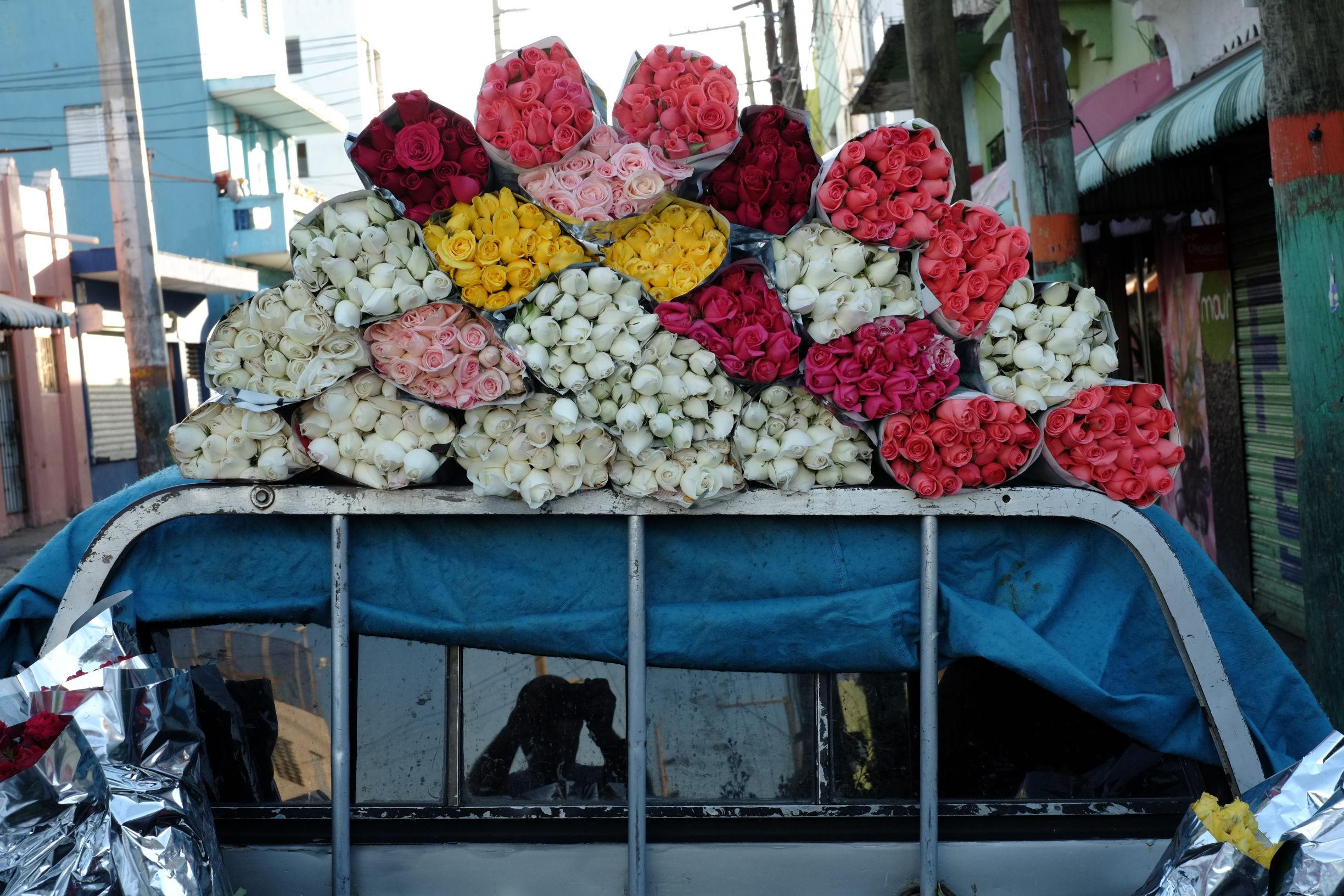
BEHIND THE LENS
SANTO DOMINGO, DOMINICAN REPUBLIC BY MAURICE SANCHEZ
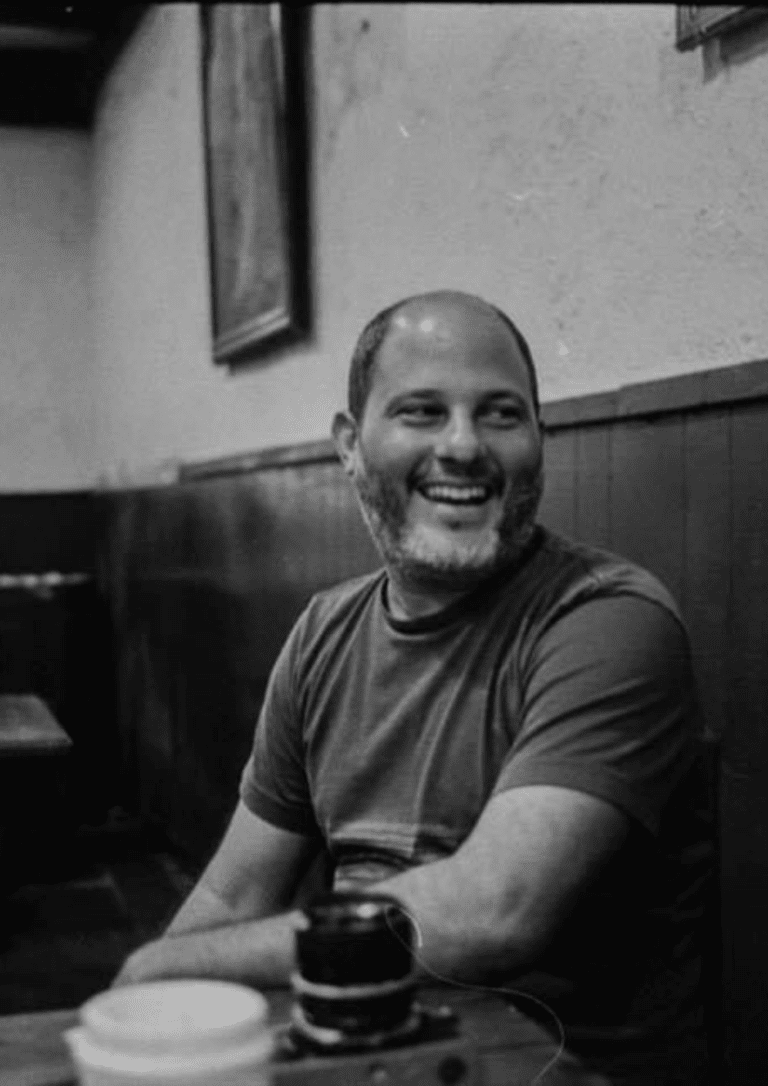
Born in Santo Domingo in 1972, Maurice Sanchez is a multidisciplinary artist who has dedicated his life to researching and documenting the various aesthetic manifestations of Dominican popular culture. The objective? To reflect on issues related to identity and progress based on these findings.
Sanchez currently works as Creative Director and partner in the Pardo agency (@holapardo – @pardo.agency), and is a published author. His book Flow Tropical (@elflowtropical), which he published with Ediciones de a Poco, documents popular Dominican graphics.
His work has been exhibited at the Museum of Modern Art and the Cultural Center of Spain, both in Santo Domingo, and the León Center in Santiago, as well as the Brooklyn Museum in New York.
Sanchez also participated in the San Juan Poli / Gráfica Triennial, the Meca Art Fair, in San Juan, Puerto Rico, and in the Havana Biennial, in Cuba.
Instagram: @mauricesanchezr
What attracts you to a city?
A combination of themes, such as those peculiar relationships between spaces and people. Smells, colors, sounds, some particular cadence or rhythm of certain activities, the ingenious ways in which things are presented, the solutions and improvised spaces. The architecture in use, in evolution.
What does Santo Domingo smell like?
Like the Caribbean Sea.
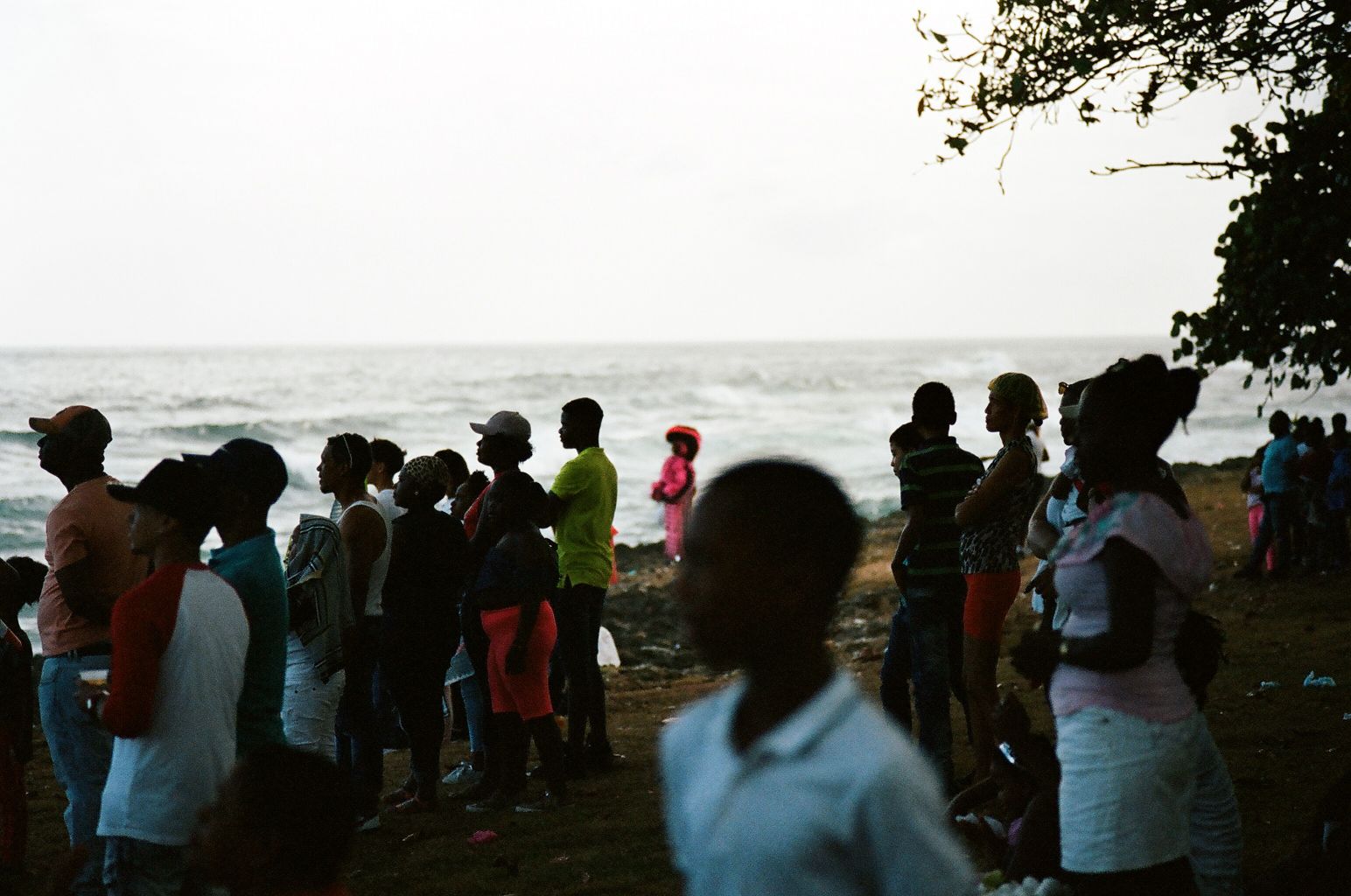
What does Santo Domingo taste like?
A cheese melt, with toasted water bread and green tomatoes from the original Barra Payán, before remodeling. Accompanied, of course, by a Zapote Ca milkshake. The “Ca” is because they use evaporated Carnation Milk.
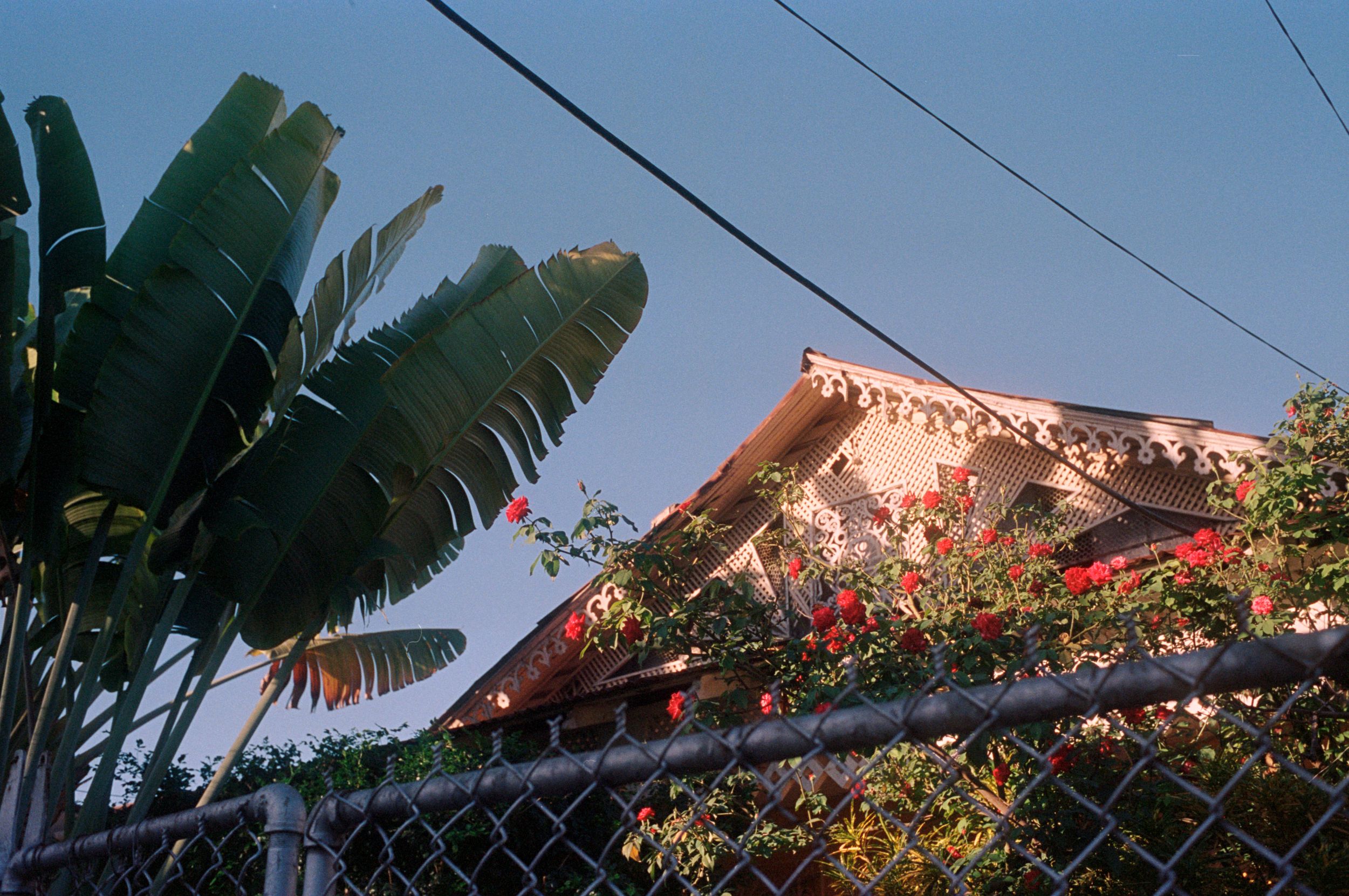
What is the most picturesque neighborhood in the city?
In my opinion, Villa Consuelo, Villacon. One of the most emblematic neighborhoods of the city. A necessary walk if you want to see and know a lot about Santo Domingo in a very short time.
From the shops and peddlers of Avenida Duarte, importers, clothing, perfume and shoe stores. The big pharmaceutical distributors and food stores. Jewelers and pawn shops. The Villa Consuelo Market.
The artisan workshops that work with wood, metal, sewing and upholstery.
The beautiful and picturesque traditional-style dwellings that contrast with the Mambo Futurist style drinks and discotheques.
The weekends are full of people on the “Malecón” behind their housing projects.
Sidewalks that become extensions of houses with visits, music and beer.
The house that sells Bin Laden drinks and hookah accessories.
Robert Discos Agency, The Big Leaguer, with a large collection of vinyls for sale. You’re likely to find yourself the debut of The New York Dolls and The New York Band.
At night you can go from dancing son in El Secreto Musical to Dembow in El Pantalón or in any of its renowned nightclubs and drinks.
Villacon has it all.
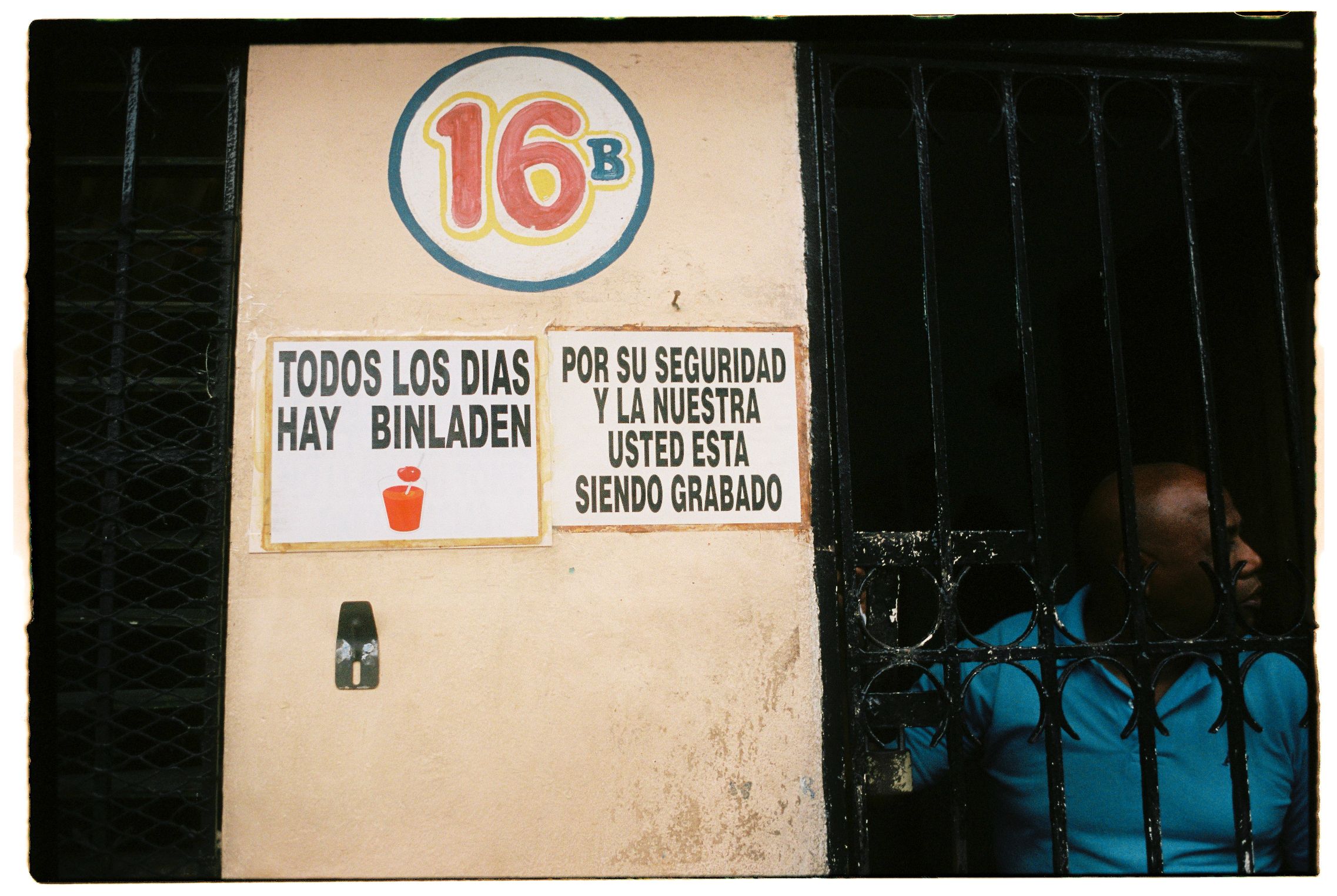
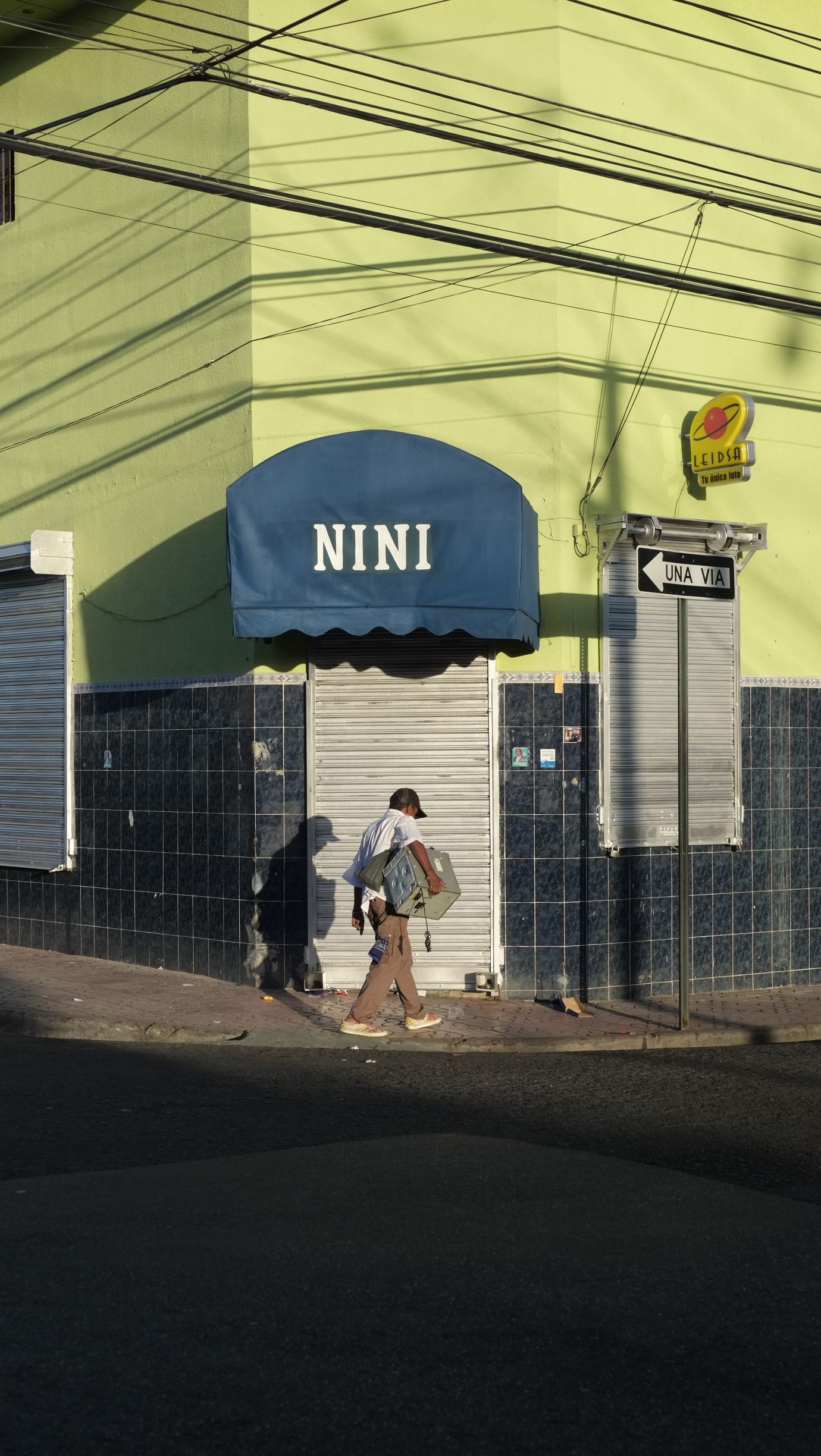
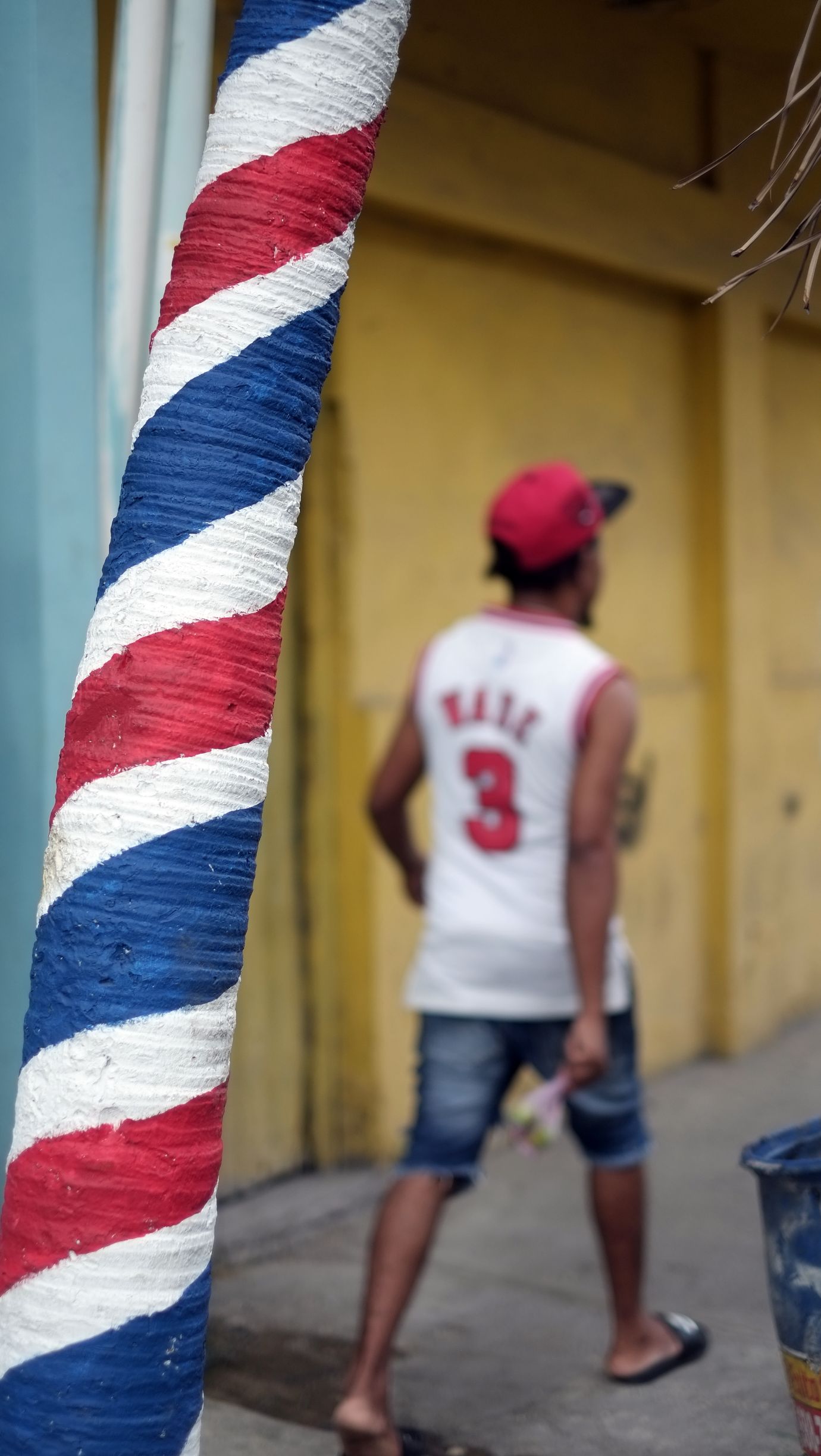
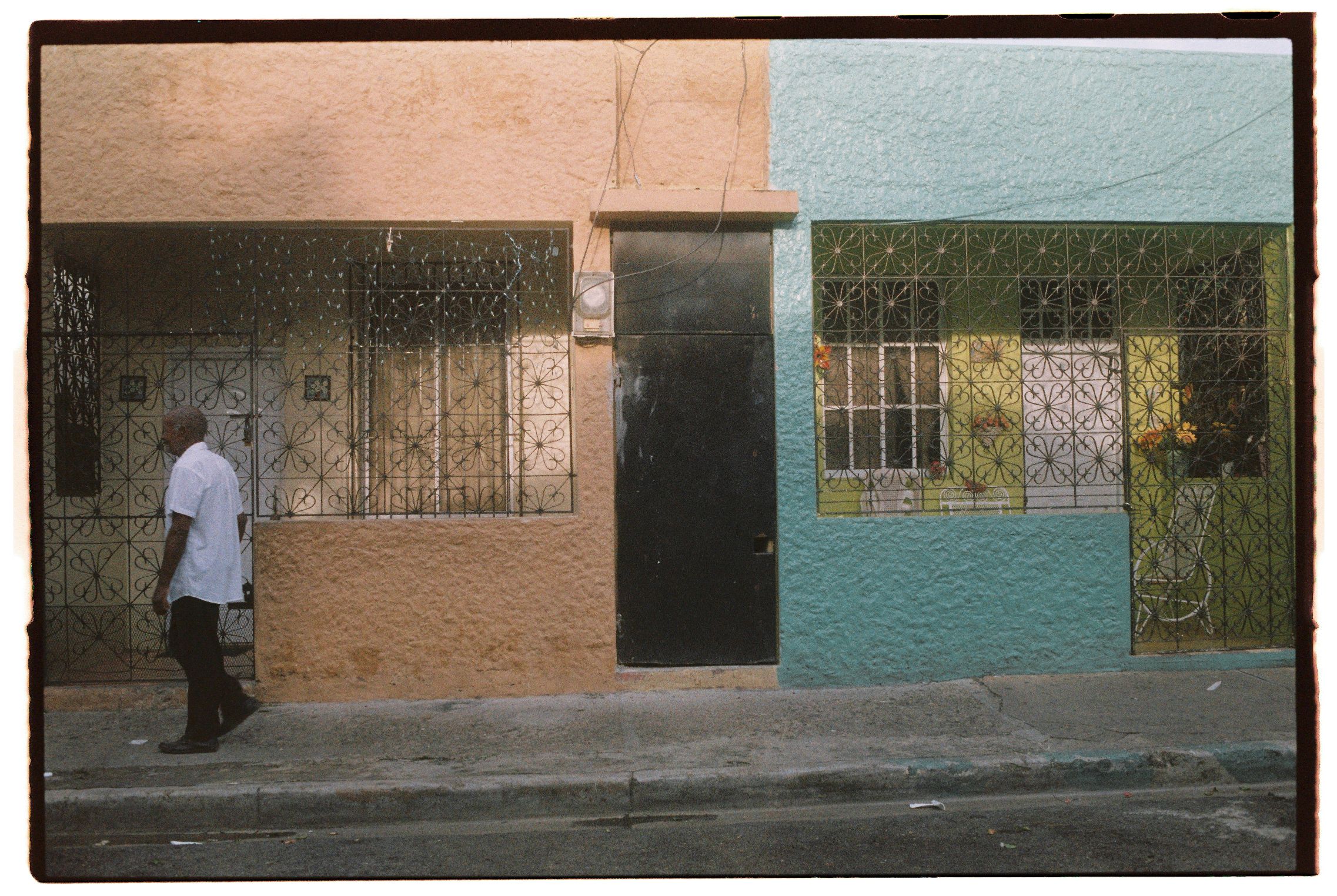
Best discovery?
El Secreto Musical. A family business that surpasses 40 years of tradition in Villa Consuelo.
An authentic and very particular space, decorated with lights and garlands of colored paper cutouts, commemorative posters, notices and photographs. Small tables with flowered tablecloths.
Impeccable musical selection of son, salsa and tropical rhythms by the hand of septuagenarian DJs in a warm and democratic environment. Dance, rum, beer and conversations with all kinds of people without distinction.
All this on a Tuesday night, closing at twelve o’clock with a raffle for those who arrive early and find a ticket at their table.
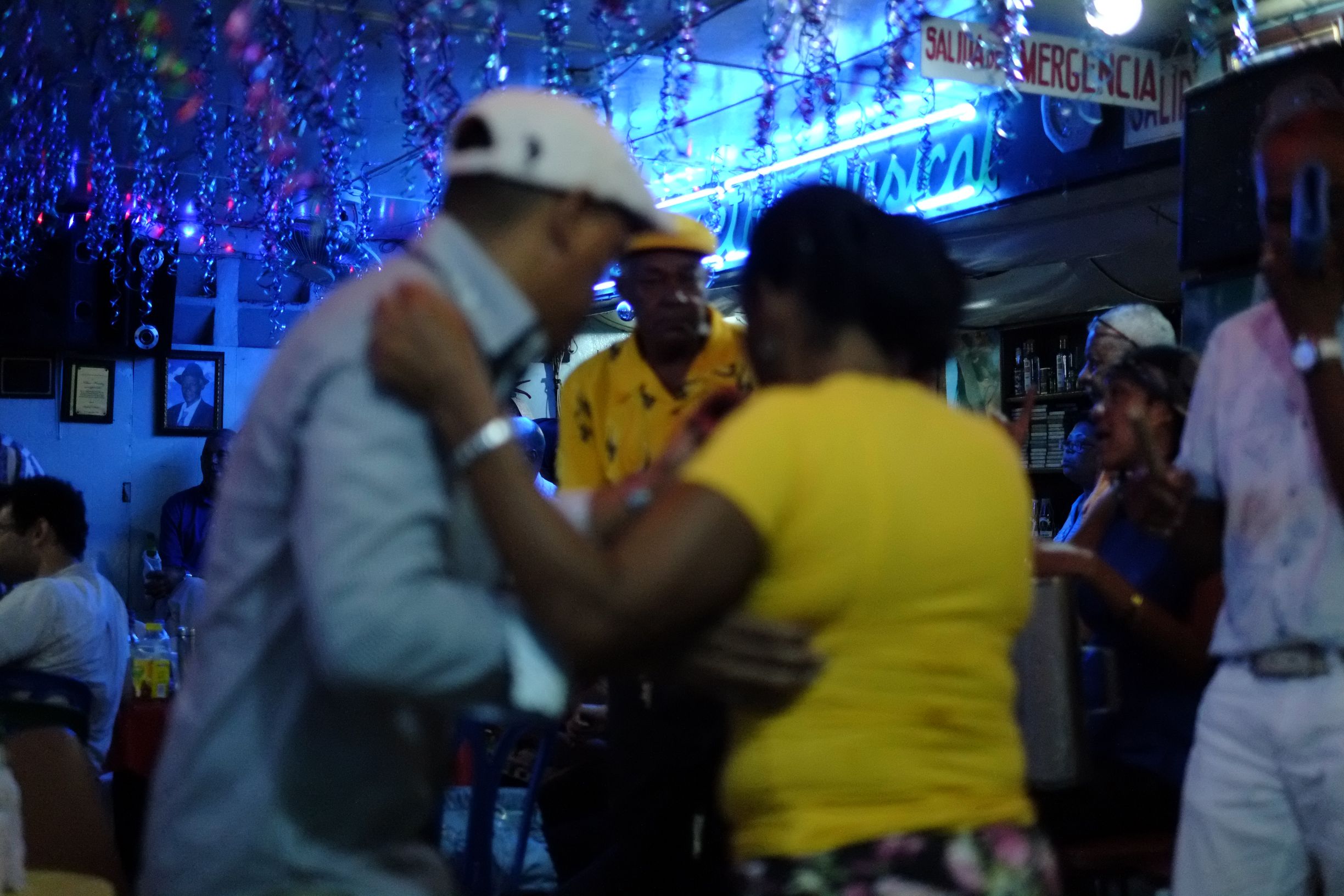
If you had to choose your favorite activity in Santo Domingo, what would it be?
It would be two things, which are very connected.
An activity: the Miguel D. Mena Book Festival and its Cielonaranja Editions (www.cielonaranja.com). It convenes some Saturday afternoons, generally in the Parque Pellerano Castro or Parque Rosado, also called the Parque de los Poetas.
These are encounters with a lot of conversations, readings, book sales, with new or familiar faces and beer from the colmado just in front.
A place: the roof of Miguel’s house in San Carlos for Tuesday meetings. Always good conversation, Gabina, the cats, a very interesting view of the city, with nearby courtyards and buildings.
A soundtrack that mixes sounds of neighbors, churches and grocery stores. In a corner, through a small hole, you can see the sea.
What was your first impression of Santo Domingo?
My first impression was of a city with access to the sea, horizontal, wooded, full of color and life, with people on the streets. Creative people improvising ways of living, with grocery stores on every corner, with music on the sidewalks. Until “Tiny New York” arrived.
If Santo Domingo had a song, what song would it be?
La Mar de Santo Domingo by Eddy Núñez
O Jardinera by Rita Indiana y Los Misterios.
Santo Domingo in a graphic?
Definitely its popular graphic, graphics adorning the betting banks. A style recognized by all today and created by Lolo Jackson.
I discovered Lolo and his particular style more than 20 years ago, when it was still something very focused only in some neighborhoods in the upper part of Santo Domingo, in coffee shops, hair salons, barber shops, boutiques and video clubs.
Then Lolo began applying it to some betting banks, and the phenomenon that spread throughout the city and the island is history.
A mix of neon colors, frost, appropriate cartoon characters, comic-inspired fonts, promising money and fortune quotes. Something truly unique.
When you travel to Santo Domingo, you cannot miss…
A grocery store, they are the heart of the neighborhoods, the city and the whole country. Spending time in a grocery store is a concentrated Dominican experience.
A walk down El Conde Street, from Caamaño to Michael Jackson, and closing with bolitas de queso and a Bohemia beer in the Palacio de la Esquizofrenia, Café El Conde.
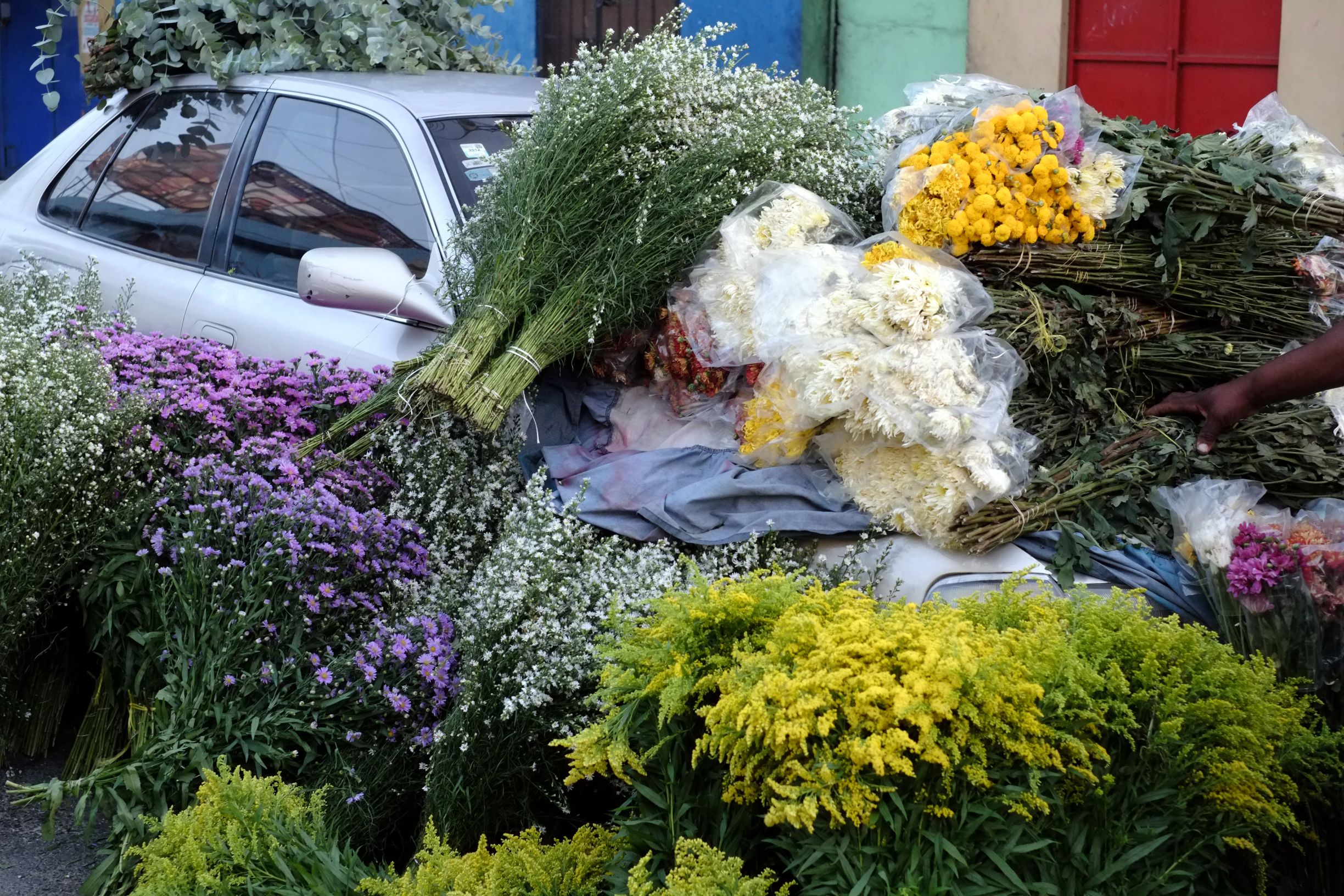
Something everyone should know before visiting Santo Domingo?
You’ll probably hear phrases such as: “that’s dangerous” and “you have to be careful”, but there is no need to fear. Santo Domingo is full of movement, noise, and chaos. But also cheerful, friendly, warm and caring people. Common sense is more than enough to get around the city without problems.
What is most unique about Santo Domingo, something you haven’t seen elsewhere?
I love its annual military parade in commemoration of the National Independence. I hate weapons and the Armed Forces seem very unnecessary to me, but this celebration takes revenge on its Trujillo heritage.
The event confirms the Malecón as the natural axis of the city, attracting a lot of people, from the military to children, and has defeated the Dominican state in all its efforts to separate this event from the Carnival celebration.
The result is a show in the middle of the Malecón with the Caribbean Sea in the background, children dressed up as military and policemen, the military with painted faces, doing pirouettes in engines, horses, war tanks and boats that will never see action for the rest of the year or their lives.
Street vendors, street food, music off tune from the military bands, the noise of airplanes and helicopters, trampled paper flags and Peppa Pig, Masha and El Oso or The Minions balloons, floating in the air full of chichiguas (kites).
A truly out of this world show.
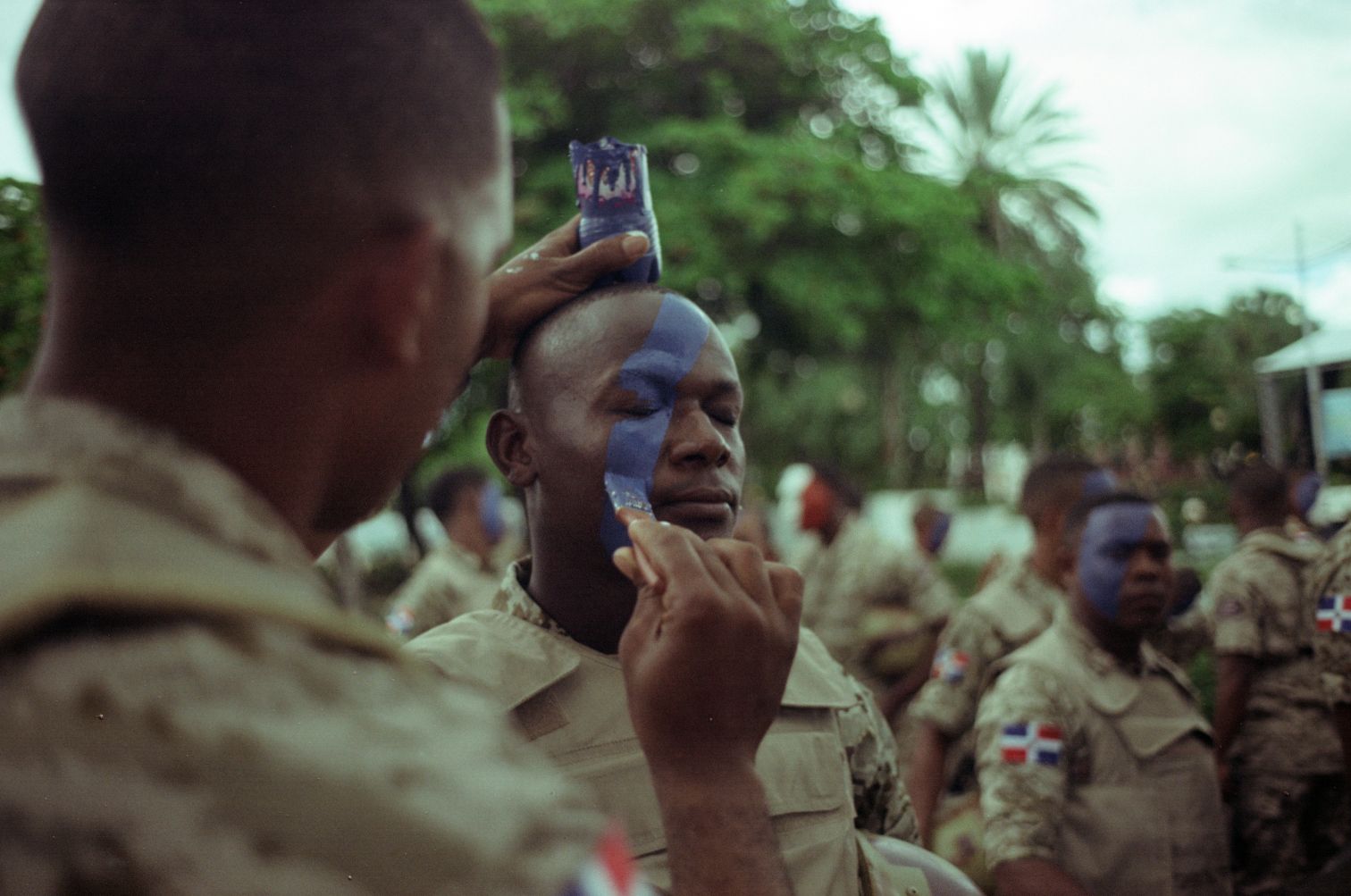
What is beauty to you?
Something that I can’t help but portray, that makes me stop to look. Something that is found in many people and everywhere.
A word or phrase?
KLK (¿Qué lo qué? or What is what?). It’s something like “Hey, what’s up?, what’s up? What you doing?”.
A local food or drink?
I love the queso de hoja. There is a lot of Lebanese presence in the country, so the quipes (kibbeh) have become a kind of adopted son of the Dominicans. They are everywhere: in cafes, bakeries and grocery stores.
In fact, many people probably think they are a purely local meal. I don’t eat meat, but they also make them stuffed with cheese or vegetables.
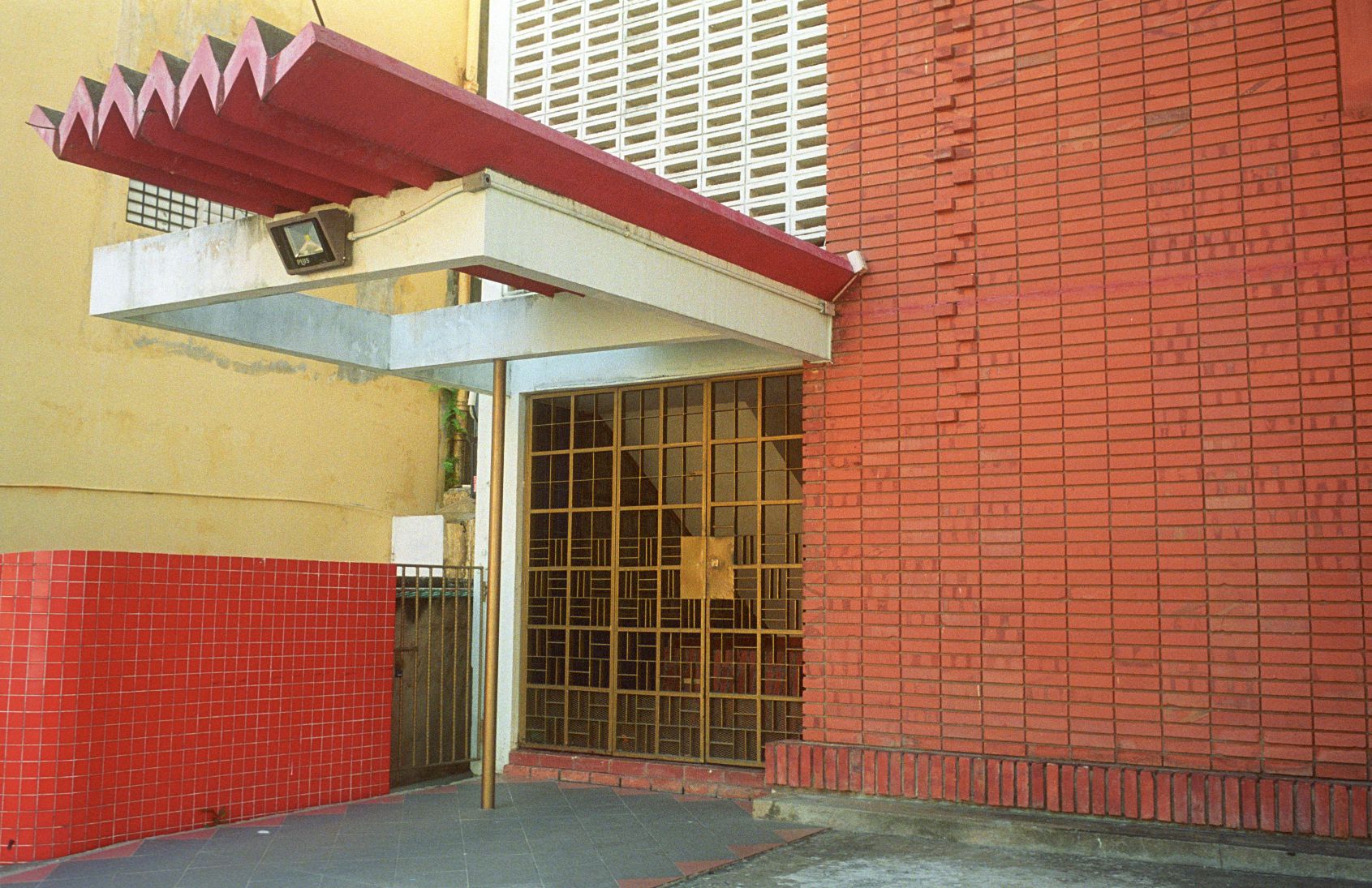
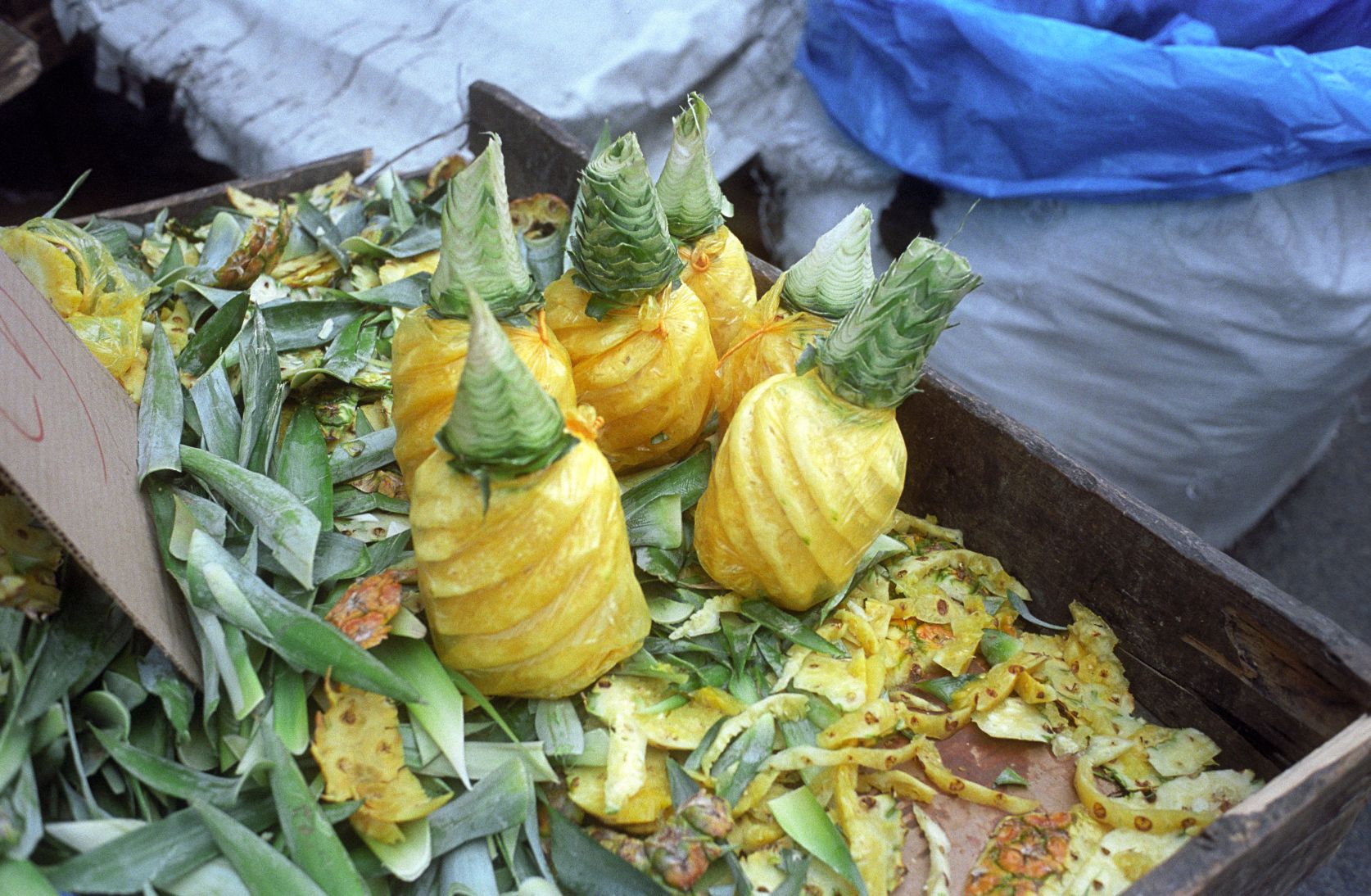
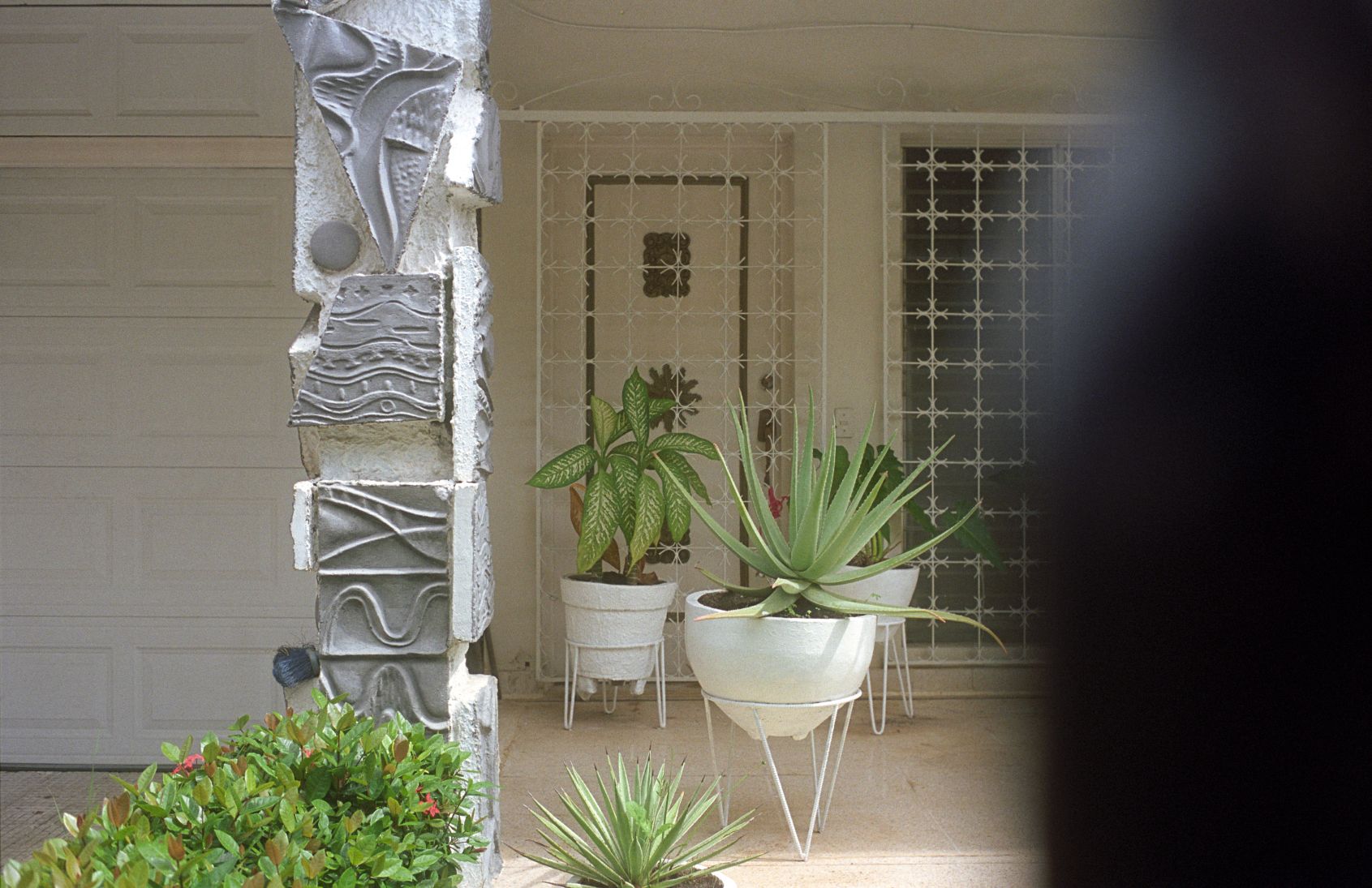
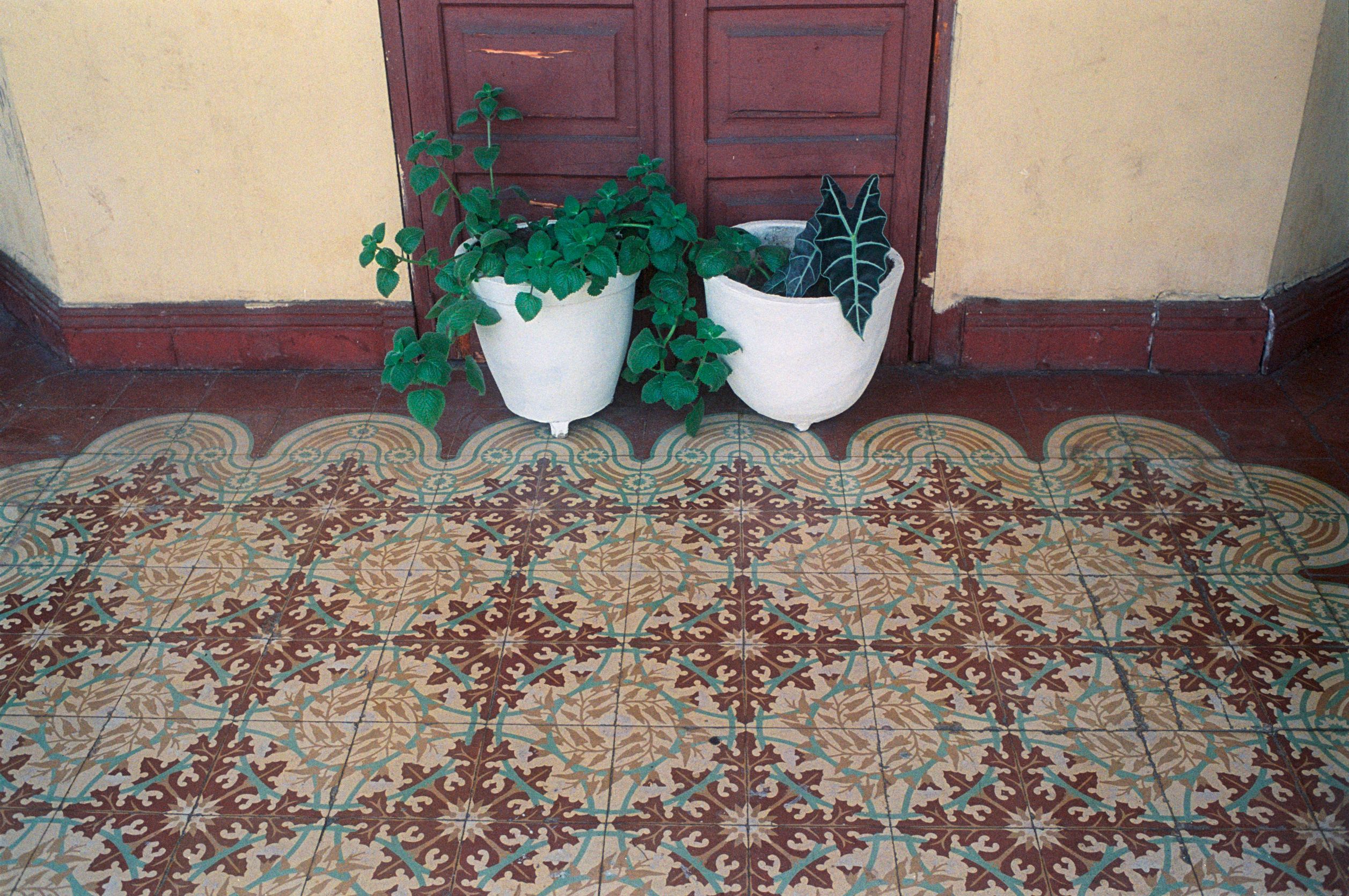
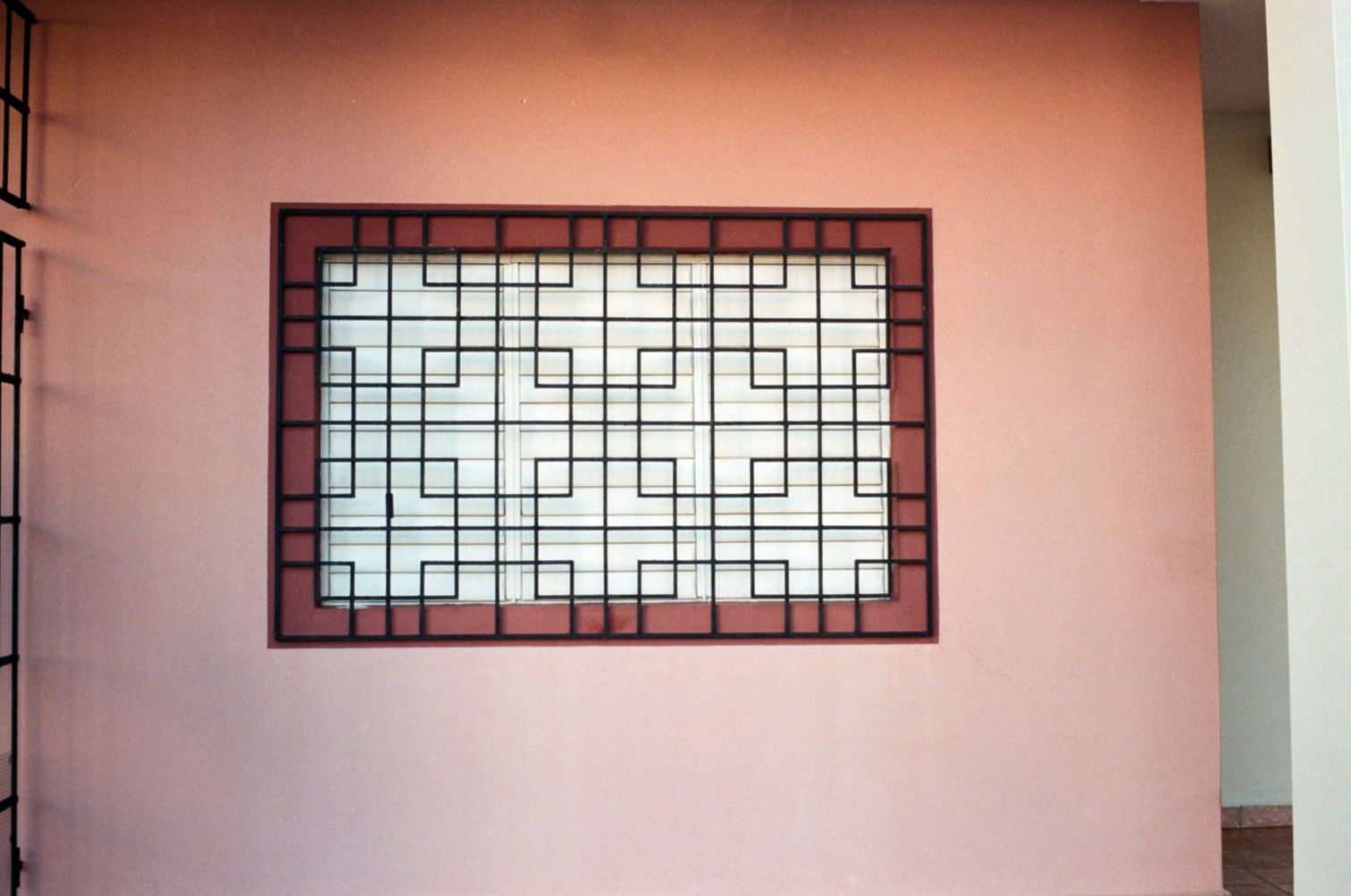
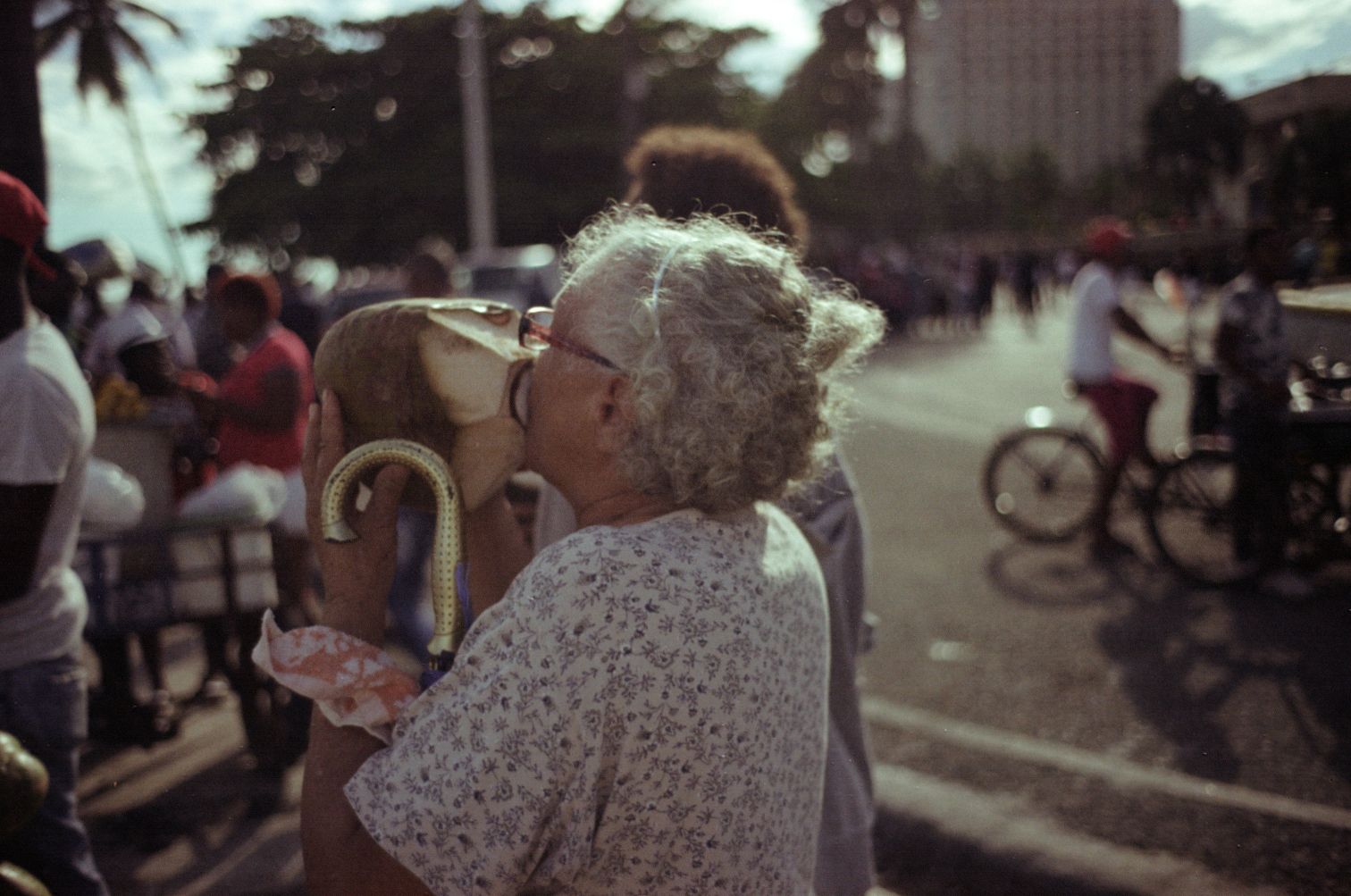
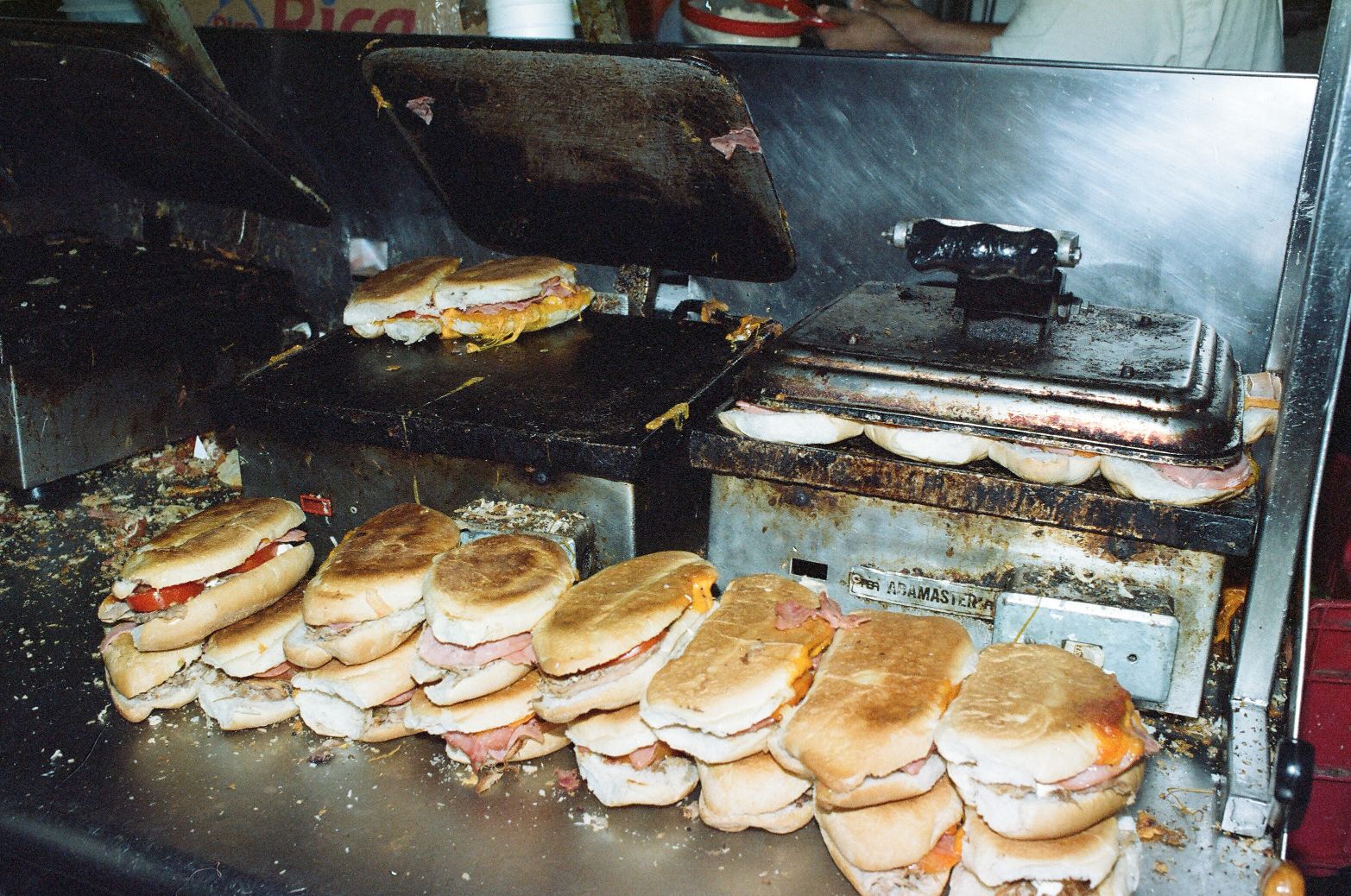
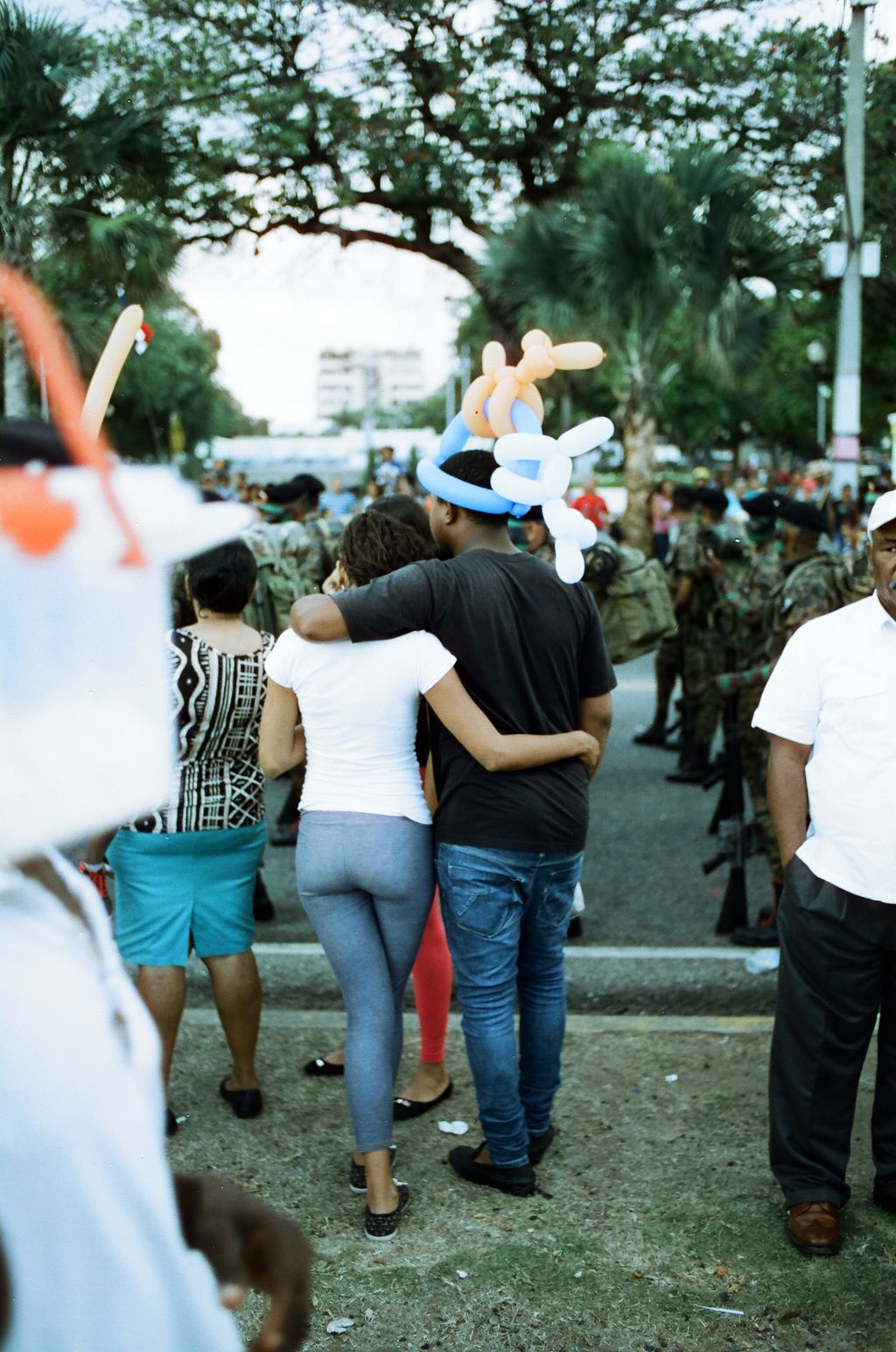
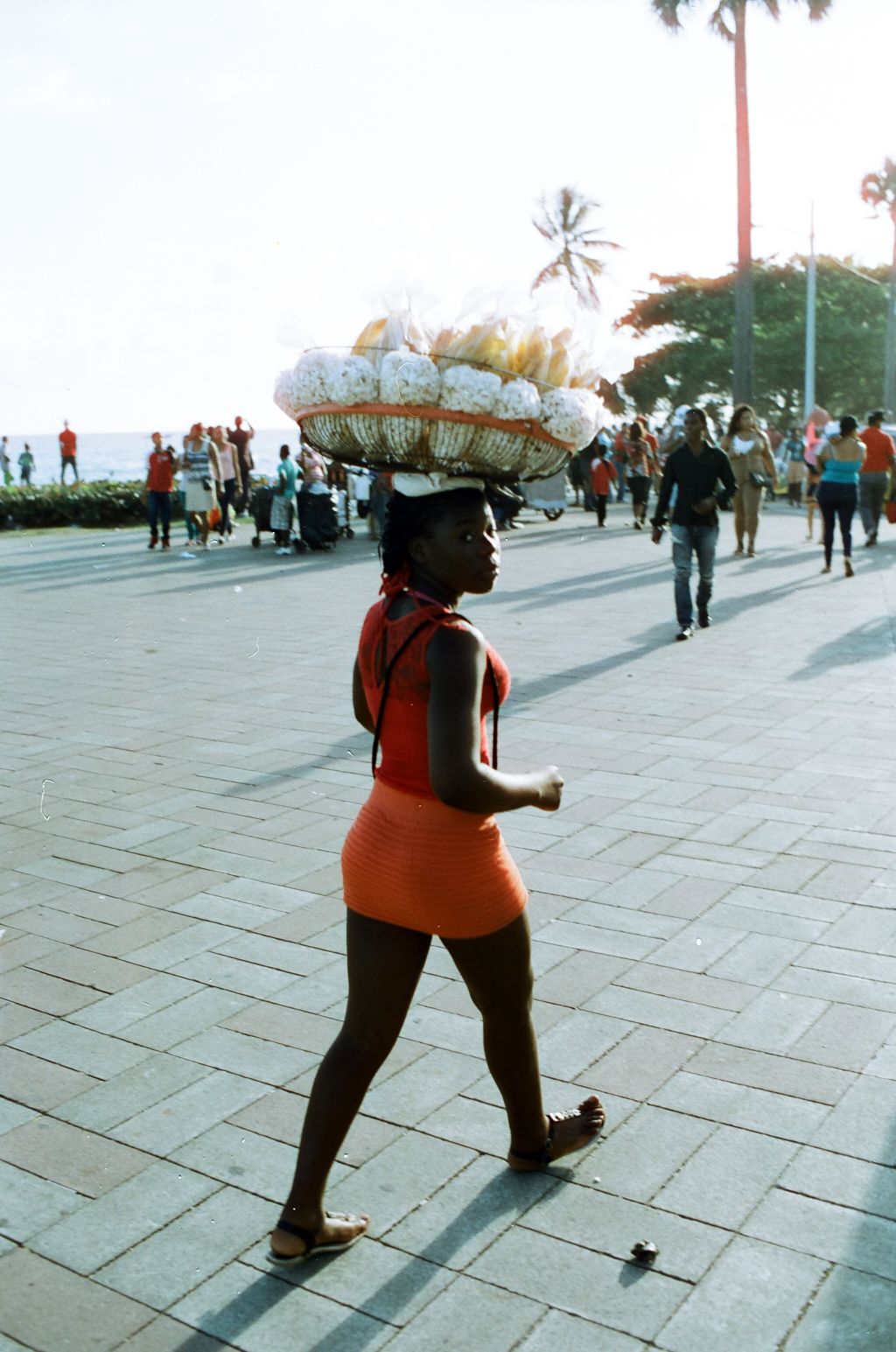
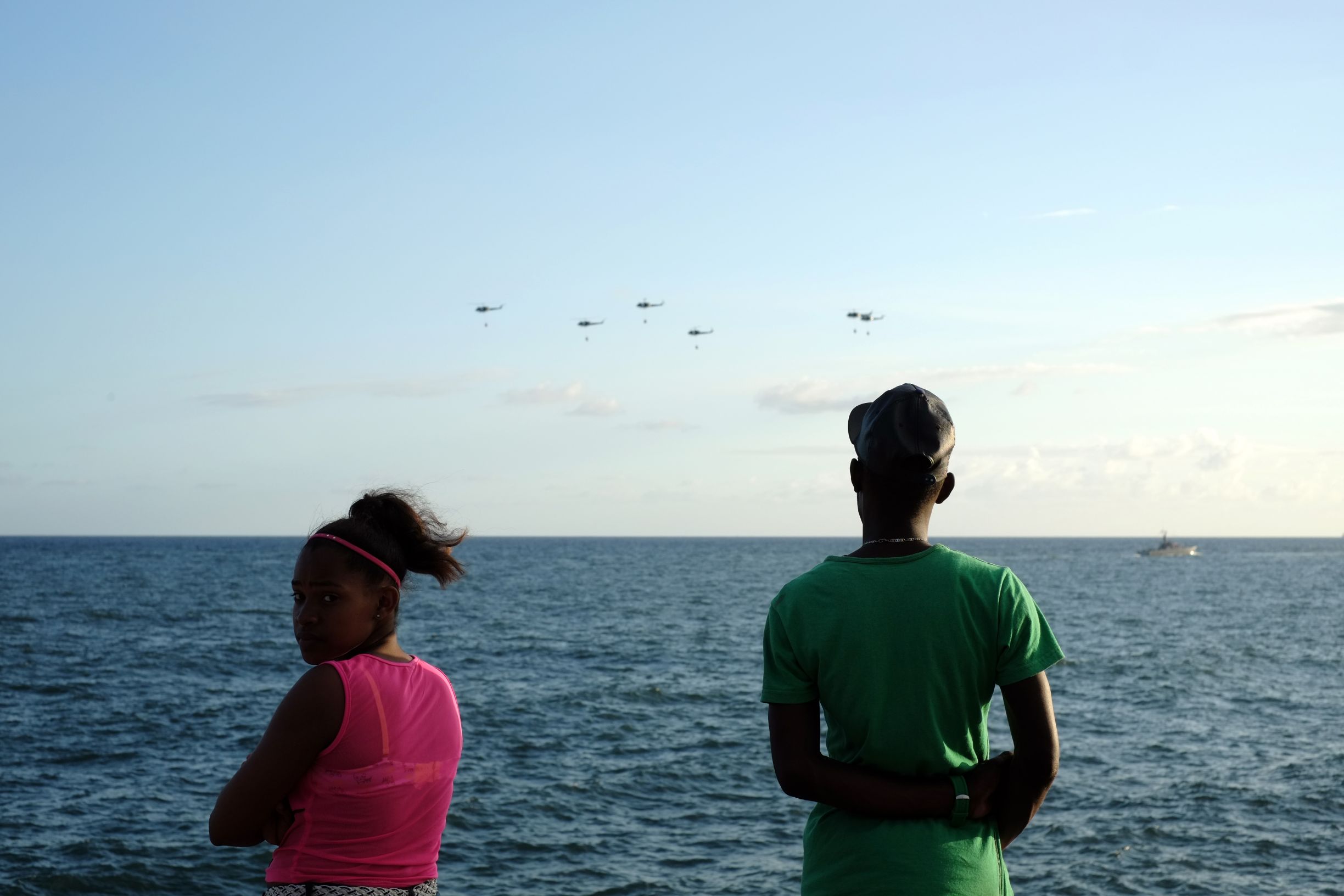


Portrait by Jaime Guerra.